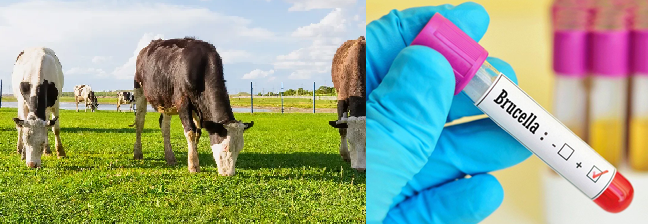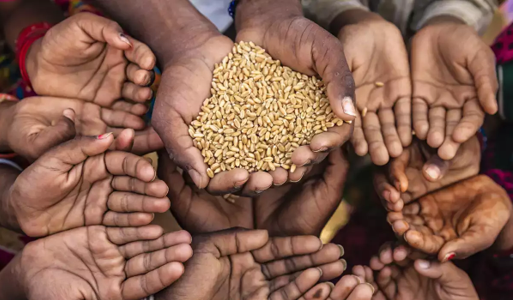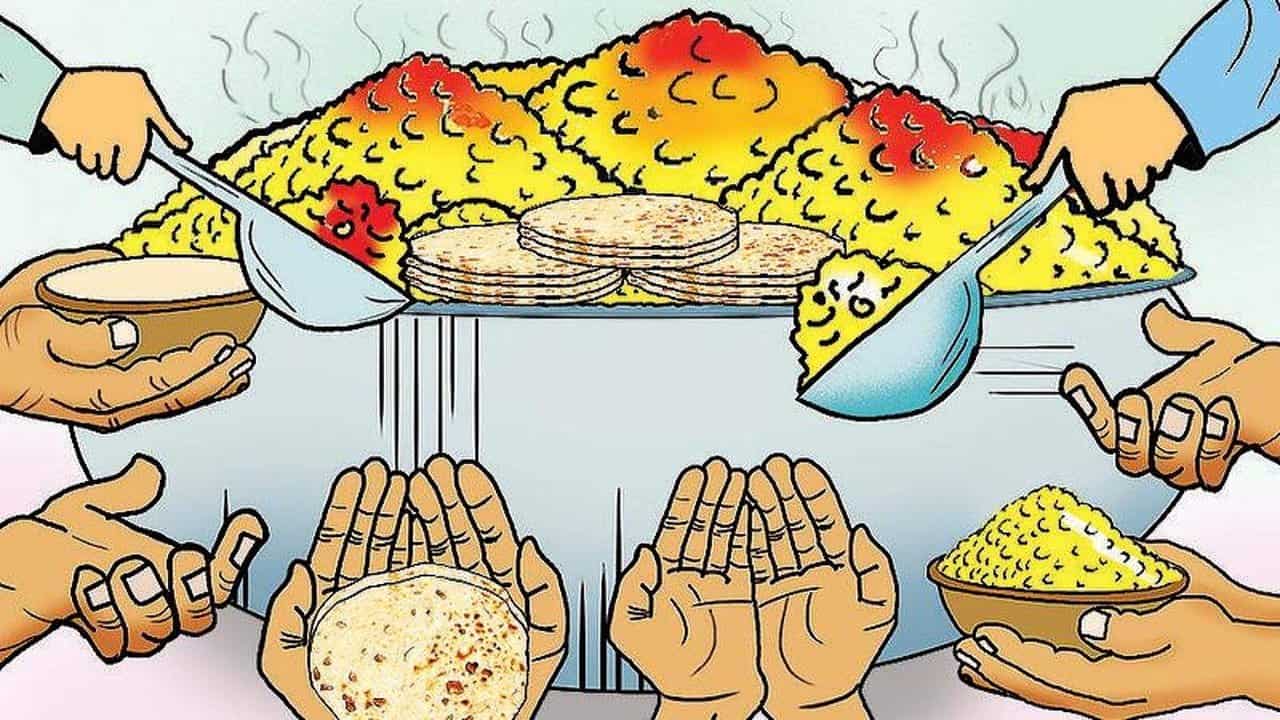Note4Students
From UPSC perspective, the following things are important :
Prelims level: Not much
Mains level: Paper 3- Role of microfinance in India and challenges sector faces
The article highlights the important role played by the microfinance sector in furthering financial inclusion in India and suggests measures to achieve holistic development of the sector.
Important role played by microfinance
- No other form of financial services has had the kind of far-reaching impact, in terms of fostering financial inclusion, as microcredit has.
- Access to small, collateral-free loans for economically productive purposes has helped transform the lives of millions at the bottom-of-the-pyramid—especially women.
- Over the past decade, India’s microfinance industry has grown at a compound annual growth rate of 26% to reach ₹2.36 trillion.
- It has helped 50 million economically vulnerable Indians, 99% of them women, live a life of dignity and financial independence.
- Assuming that these 50 million people who took a loan to start a small business employed at least one other person, it translates into 50 million additional jobs in the country.
- This creates a ‘network effect’ that has a social impact at scale.
Evolution of microfinance industry
- Recommendations of the Malegam Committee, which became regulations, and practices such as relying on credit bureau data to assess a borrower’s creditworthiness have helped the industry immensely.
- The vital role that microfinance plays in the last-mile delivery of financial services was acknowledged.
- Subsequently, eight out of the 10 small finance bank licences granted were also given to microfinance institutions.
- RBI has sought to undertake a comprehensive review of the sector again, after 10 years, to better align the regulatory framework with the sector’s current realities.
Steps for development of sector
- First, Entities should promote financial literacy through group meetings of borrowers.
- Second, organizations should complement their microcredit operations with social development projects and community-connect initiatives.
- Third, prospective borrowers’ indebtedness and ability to repay dues should be assessed properly.
- Fourth, loans must be given only for income-generation purposes.
- Fifth, every microfinance organization should devote time and resources for capacity building at the grassroots.
- Sixth, rather than focusing on taking over the existing debt of a borrower, or lending to her further, institutions should focus on bringing new-to-credit customers into the fold.
Consider the question “How can microcredit stimulate financial inclusion in India? Suggest the measures for the development of microfinance sector in India.”
Conclusion
There is much more that we, as a nation, collectively need to do in order to bring a vast population of unbanked and underbanked Indians into the fold of formal financial services.
Get an IAS/IPS ranker as your 1: 1 personal mentor for UPSC 2024
Attend Now
Note4Students
From UPSC perspective, the following things are important :
Prelims level: VARUNA-21
Mains level: Paper 2- VARUNA-21
Details of the exercise
- The 19th edition of the Indian and French Navy bilateral exercise ‘VARUNA-2021’ is scheduled to be conducted in the Arabian Sea from 25th to 27th April 2021.
- The exercise will see high tempo-naval operations at sea, including advanced air defence and anti-submarine exercises, intense fixed and rotary wing flying operations, tactical manoeuvres, surface and anti-air weapon firings, underway replenishment and other maritime security operations.
- Units of both navies will endeavour to enhance and hone their war-fighting skills to demonstrate their ability as an integrated force to promote peace, security and stability in the maritime domain.
- On completion of exercise VARUNA-21, to consolidate accrued best practices and enhance interoperability, Indian Navy’s guided-missile frigate INS Tarkash will continue to exercise with the French Navy’s Carrier Strike Group (CSG) from 28th April to 1st May 2021.
- During this period, the ship will take part in advanced surface, anti-submarine and air-defence operations with the French CSG.
Significance of exercise
- VARUNA-21 highlights growing bonhomie and showcases increased levels of synergy, coordination and inter-operability between the two friendly navies.
- These interactions further underscore the shared values as partner navies, in ensuring freedom of seas and commitment to an open, inclusive Indo-Pacific and a rules-based international order.
Get an IAS/IPS ranker as your 1: 1 personal mentor for UPSC 2024
Attend Now
Note4Students
From UPSC perspective, the following things are important :
Prelims level: Article 50, Article 124
Mains level: Paper 2- Challenges facing judiciary in India
The article highlights the issues facing the judiciary in India and emphasises the need for addressing these issues.
Separating judiciary from the executive
- Today, the judiciary, especially the SC, is called upon to decide a large number of cases in which the government has a direct interest.
- These can be politically sensitive cases too.
- The framers of the Constitution understood the importance of the oath of office of judges of the Supreme Court of India (SC) and carefully designed its language.
- The words, “without fear or favour” to “uphold the constitution and the laws” are extremely significant and stress the need for a fiercely independent court.
- Article 50 of the Constitution provides: “The State shall take steps to separate the judiciary from the executive in the public services of the State.”
Master of roaster issue
- The Chief Justice of India is the first amongst the equals but by the virtue of his office assumes significant powers as the Master of the Roster to constitute benches and allocate matters.
- The SC has re-affirmed this position in a rather disappointing decision in Campaign for Judicial Accountability and Reforms v. Union of India, (2018).
- The result has been catastrophic.
- Many matters were either treated casually or deflected for no reason from serious hearing.
Accountability from legislature and executive
- The SC is expected to seek strict accountability from the legislature and executive and any infraction of the Constitution and laws must be corrected.
- Yet, this is not happening.
- A country of billion-plus needs its highest court to stand for the people, not seemingly for the executive of the day.
Inherent and fundamental challenges
- The judiciary is besieged by inherent and fundamental challenges.
- Millions of pending cases, quality of judges and their decisions, organisational issues and its integrity and impartiality, need urgent attention.
- Yet, in the last two decades precious little has been done.
- Justice is eluding the common man, including the vulnerable sections of society.
Way forward
- The new Chief Justice must seriously introspect and free himself of the bias in constituting benches and allocating cases and take concrete steps to revitalise the administration of justice.
- Only then will the rule of law be restored and the Constitution served.
Consider the question “Examine the inherent and fundamental challenges faced by the judiciary in India. Suggest the measures to deal with these challenges.”
Conclusion
The Chief Justice of India on account of the position he holds as paterfamilias of the judicial fraternity, was suspected by none other than Dr B R Ambedkar. Let us hope the new Chief Justice makes serious efforts to prove otherwise.
Get an IAS/IPS ranker as your 1: 1 personal mentor for UPSC 2024
Attend Now
Note4Students
From UPSC perspective, the following things are important :
Prelims level: How vaccine works
Mains level: Paper 2- Breakthrough infections
Breakthrough infections
- There have been several cases of Covid-19 vaccinated people, even those who have received both doses, testing positive for the virus.
- Such cases are referred to as “breakthrough” infections, indicating that the virus has been able to break through the defences created by the vaccine.
- Such cases have led to some doubts being expressed about the effectiveness of the vaccine, and contributed to the already prevailing vaccine hesitancy.
- However, vaccines protect not against the infection, but against moderate or severe disease and hospitalisation.
- It typically takes about two weeks for the body to build immunity after being vaccinated.
- So, the chances of a person falling sick during this period are as high — or as low — as the chances for any person who has not been vaccinated.
- Also, those in the priority list of vaccination, such as healthcare workers and frontline workers, have been prone to getting infected due to prolonged occupational exposure to the virus
Full protection not possible
- It is very well understood that no vaccine offers 100% protection from any disease.
- However, according to the Centers for Disease Prevention and Control (CDC) in the United States, vaccinated people are much less likely to get sick, but it is never entirely ruled out.
- Then there is the emergence of new variants of the virus.
- Some variants of the virus are able to evade the human immune response, and therefore have a greater chance to break through the defences created through the vaccine.
Breakthrough cases in India
- Among 10.03 crore people who had taken only the first dose of Covishield vaccina, 17,145 had got infected.
- That translates into a 0.02% prevalence.
- Among the 1.57 crore people who received the second dose as well, 5,014, or about 0.03%, had got infected later.
- About 1.1 crore doses of Covaxin have been administered until now.
- Of the 93.56 lakh who took only the first dose, so far 4,208 have got the infection.
- That is about 0.04% of the total.
- Among the 17.37 lakh who have taken the second shot, only 695 had been infected, again 0.04%.
Challenges
- “Given the scope of the pandemic, there’s a huge amount of virus in the world right now, meaning a huge opportunity for mutations to develop and spread.
- That is going to be a challenge for the developers of vaccines.
Get an IAS/IPS ranker as your 1: 1 personal mentor for UPSC 2024
Attend Now
Note4Students
From UPSC perspective, the following things are important :
Prelims level: Type 1 interferons
Mains level: Paper 2- Emergency use approval of Virafin
About the drug
- It is used in treating people with chronic hepatitis B and C.
- The Drug Controller General of India (DCGI) granted emergency use approval for pharma major Zydus Cadila’s antiviral drug ‘Virafin’, to treat moderate COVID-19 disease in adults.
- When administered early on during COVID, Virafin will help patients recover faster and avoid much of the complications.
- It significantly reduces viral load when given early on and can help in better disease management.
Findings of the clinical trials
- A single dose subcutaneous regimen of the antiviral Virafin [a pegylated interferon alpha-2b (PegIFN)] will make the treatment more convenient for the patients.
- When administered early on during COVID, Virafin will help patients recover faster and avoid much of the complications.
- In the phase-3 trials, the drug was able to achieve “better clinical improvement in the patients suffering from COVID-19”.
- A “higher proportion (91.15%) of patients administered the drug were RT-PCR negative by day seven as it ensures faster viral clearance”.
- The drug reduced the duration for supplemental oxygen to 56 hours from 84 hours in moderate COVID-19 patients.
How the drug works
- Type I interferons are the body’s first line of defence against many viral infections.
- In old people, the ability to produce interferon alpha in response to viral infections gets reduced, which might be the reason for higher mortality.
- The drug when administered early during the disease can replace this deficiency and help in the recovery process.
Get an IAS/IPS ranker as your 1: 1 personal mentor for UPSC 2024
Attend Now
Note4Students
From UPSC perspective, the following things are important :
Prelims level: Consolidated Sinking Fund (CSF)
Mains level: Paper 3- RBI extends WMA scheme
About Ways and Means credit
- Simply put, it is a facility for both the Centre and states to borrow from the RBI.
- WMAs are temporary advances given by the RBI to the government to tide over any mismatch in receipts and payments.
- Section 17(5) of the RBI Act, 1934 authorises the central bank to lend to the Centre and state governments subject to their being repayable “not later than three months from the date of the making of the advance”.
Extension of the scheme
- The RBI decided to continue with the existing interim Ways and Means Advances (WMA) scheme limit of ₹51,560 crore for all States/ UTs shall for six months given the prevalence of COVID-19.
- Based on the recommendations of the Advisory Committee on WMA to State Governments, 2021 — chaired by Sudhir Shrivastava — the RBI had revised the WMA Scheme of States and Union Territories (UTs).
- The WMA limit arrived at by the Committee based on total expenditure of States/ UTs, works out to ₹47,010 crore.
What RBI said about SDR
- The RBI further said Special Drawing Facility (SDF) availed by state governments and UTs will continue to be linked to the quantum of their investments in marketable securities issued by the Government of India.
- The net annual incremental investments in Consolidated Sinking Fund (CSF) and Guarantee Redemption Fund (GRF) will continue to be eligible for availing of SDF, without any upper limit.
- CSF and GRF are reserve funds maintained by some State Governments with the Reserve Bank of India.
Get an IAS/IPS ranker as your 1: 1 personal mentor for UPSC 2024
Attend Now
Health and Animal Husbandry teams have launched preventive measures and initiated an epidemiological investigation, after one case of brucellosis, was confirmed in a prisoner.

- The infection is passed on to humans through the ingestion of unpasteurized milk and milk products or contact with animal secretions.
Brucellosis:
- Brucellosis is a bacterial disease that mainly infects cattle, swine, goats, sheep and dogs.
- Humans can get infected if they come in direct contact with infected animals or by eating or drinking contaminated animal products or by inhaling airborne agents.
- According to the WHO, most cases of the disease are caused by ingesting unpasteurised milk or cheese from infected goats or sheep.
Symptoms:
- Fever, sweats, malaise, anorexia, headache and muscle pain
- While some signs and symptoms can last for long periods of time, others may never go away.
- These include recurrent fevers, arthritis, swelling of the testicles and scrotum area, swelling of the heart, neurologic symptoms, chronic fatigue, depression and swelling of the liver or spleen.
- Human to human transmission of the virus is rare.
Get an IAS/IPS ranker as your 1: 1 personal mentor for UPSC 2024
Attend Now
The Central Government announced that 5kg of free wheat or rice per monthwill be provided to around 80 crore people for the next two months, May and June.

Major Highlights:
- This will be extended to beneficiaries under the National Food Security Act(NFSA).
- Nearly 8 million tonnes of food grains will be distributed under this scheme.
- The scheme is expected to bring relief to NFSA beneficiaries as it will be in addition to the regular entitlement of 5kg highly subsidised foodgrains to each beneficiary at Rs 3, 2 and 1 per kg of rice, wheat and coarse grains.
Pradhan Mantri Garib Kalyan Anna Yojana (PMGKAY):
- Pradhan Mantri Garib Kalyan Anna Yojana is a food security welfare schemeannounced by the Government of India in March 2020.
- PM-GKAY is a part of Atma Nirbhar Bharat to supply free food grains to migrants and poor.
- The program is operated by the Department of Food and Public Distributionunder the Ministry of Consumer Affairs, Food and Public Distribution.
Aim:
- To feed the poorest citizens of India by providing grain through the Public Distribution System to all the priority households (ration card holders and those identified by the Antyodaya Anna Yojana scheme).
- PMGKAY provides 5 kg of rice or wheat (according to regional dietary preferences) per person/month and 1 kg of dal to each family holding a ration card.

Eligibility/ Beneficiaries:
- Families belonging to the Below Poverty Line – Antyodaya Anna Yojana (AAY) and Priority Households (PHH) categories will be eligible for the scheme.
- PHH are to be identified by State Governments/Union Territory Administrations as per criteria evolved by them.
- AAY families are to be identified by States/UTs as per the criteria prescribed by the Central Government:
- Households headed by widows or terminally ill persons or disabled persons or persons aged 60 years or more with no assured means of subsistence or societal support.
- Widows or terminally ill persons or disabled persons or persons aged 60 years or more or single women or single men with no family or societal support or assured means of subsistence.
- All primitive tribal households.
-
- Landless agriculture labourers, marginal farmers, rural artisans/craftsmen such as potters, tanners, weavers, blacksmiths, carpenters, slum dwellers, and persons earning their livelihood on daily basis in the informal sector like porters, coolies, rickshaw pullers, hand cart pullers, fruit and flower sellers, snake charmers, rag pickers, cobblers, destitute and other similar categories in both rural and urban areas.
- All eligible Below Poverty Line families of HIV positive persons.
Get an IAS/IPS ranker as your 1: 1 personal mentor for UPSC 2024
Attend Now



